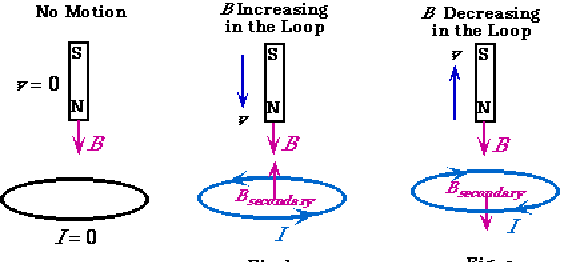Lenz's law gives the direction of an induced EMF which induces a current flow. It is always so as to oppose the change causing it. This change may be a magnetic field increasing in magnetic, such as when a a primary coil in a transformer is connected to a voltage supply. An EMF will be induced in the secondary circuit but the polarity will opposite to the EMF in the primary circuit. If the voltage in the primary circuit is kept constant, the voltage in the secondary circuit will fall, because it is a CHANGE in the primary which induces a voltage in the secondary.
If the primary circuit is then disconnected, the voltage across the primary wires will fall, but the secondary coil will oppose this fall. An EMF will be induced in the secondary circuit to oppose this fall of voltage in the primary circuit. The voltage in the secondary coil will fall to zero if the primary circuit is kept disconnected.

Lenz's law is applicable to a wide variety of situations. A magnet stationary relative to a current loop will induce no current but if it moves towards the loop a current will be induced. This current will also be associated with a magnetic field, the direction of which is given by the right hand rule. The magnetic field will be in the opposite direction to the current of the moving magnet that induced the current (above center). The magnetic fields will repel each other.
If as above right, the direction of motion of the magnet is reversed, so is the EMF induced in the wire. The effect is to oppose the motion of the magnet is being withdrawn from the vicinity of the wire, so the force is attractive.
